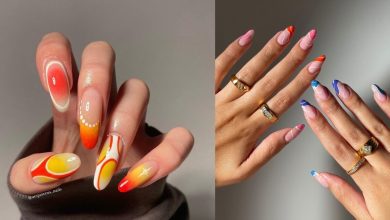Your Face Oil Soulmate Exists—Here’s How to Choose the Best Formula


It’s a common myth that those with acne-prone skin can’t use face oil. In truth, some facial oils can benefit acne-prone skin, helping to calm irritation and fade the dreaded dark spots that arrive post-breakout. But that’s not all. Facial oils can provide much-needed balance to oilier skin types by curbing extra oil production. Additionally, they quench dry skin and even balance a combination complexion. I shouldn’t need to say more to convince you that adding face oil to your routine is good, but if you need more convincing, you’ll want to keep reading. We’ve created a comprehensive list of each skin type’s facial oil soulmate. Yes, it exists, and your skin will thank you. Scroll on and find out which one is yours.
Our Top Picks
- Best Overall: Furtuna Skin Biphase Moisturizing Oil ($225)
- Best for Acne-Prone Skin: Sunday Riley U.F.O. Ultra-Clarifying Face Oil ($80)
- Best for Combination Skin: Versed Sunday Morning Antioxidant Oil-Serum ($19)
- Best for Dry Skin: Paula’s Choice Moisture Renewal Oil Booster ($37)
- Best Organic: Pai Rosehip BioRegenerate Universal Face Oil ($44)
- Best for Sensitive Skin: Biossance 100% Sugarcane Squalane Oil ($34)
- Best Drugstore: Burt’s Bees Facial Oil ($11)
Best Overall: Furtuna Skin Biphase Moisturizing Oil
The Best Face Oils for Oily or Acne-Prone Skin
The Best Face Oils for Combination Skin
The Best Face Oils for Dry Skin
The Best Organic Face Oils
The Best Face Oils for Sensitive Skin
The Best Drugstore Face Oils
FAQs
What should you look for in a face oil?
Master organic aesthetician Katie Sobelman says there are a few things to keep in mind when choosing the right face oil for your skin.
She says, “First, is the comedogenic rating. This is a scale from zero to five rating how pore-clogging a plant oil is—zero being the least pore clogging and five being the most pore clogging. Ideally, most skin types benefit from oils with a rating of two or lower. Plant oils are made up of fatty acids, essential or otherwise. Having a general understanding of a few of these fatty acids, such as essential fatty acids three, six, and nine (this is often considered nonessential because the body produces it, but it can only be produced if there is enough of three and six), can be helpful in choosing the perfect facial oil for your skin type and needs.
“I have an in-depth blog post on the subject but the gist is this: Oils rich in omega-three (alpha linoleic acid) lessen photodamage, promote anti-aging and anti-inflammatory responses in the skin, and have been found in low concentrations in acne-prone skin. Oils rich in omega-six (linoleic acid) support the structural integrity and barrier function of the skin, help unclog pores, and are great for soothing inflammatory skin conditions like eczema. Oils rich in omega-nine (oleic acid) have anti-inflammatory and skin-softening benefits while also protecting cells from free radicals and have a richer feel ideal for drier skin types. It’s worth mentioning that fatty acids like palmitic and steric acids, found in baobab oil, macadamia oil, shea butter, and coconut oils respectively, have the highest comedogenic ratings due to their occlusive properties. Ultimately, all skin types (even oily and acne-prone) can benefit from facial oils as long as you find oils with the right fatty acids for your skin’s needs.”
What step in your skincare routine should you use a face oil?
Sobelman says there’s more than one way you can apply face oil. “There are a few different camps when it comes to oil application, either before or after applying a moisturizer,” she explains. “I think there’s a place for both. Ideally, I recommend applying a few drops of oil over your favorite serums prior to applying a moisturizer. This way the lipids from your facial oil penetrate into the upper layers of the skin and the ceramides from your moisturizer lock in those lipids, creating a protective barrier. In the evening, if you’re feeling the need for even more moisture, you can apply a few additional drops of oil over your moisturizer to enhance this protective layer. This can also be a great step for a balm, such as Luzern’s Emulsion 6 or Anfisa’s An-Balm. (Think of it as a clean slug.)”
Are there any skin types that should avoid face oil?
Sobelman says all skin types can benefit from using a face oil. “All skin types, even oily and acne-prone, benefit from facial oils as long as you find oils with the right fatty acids for your skin’s needs. When it comes to most things in the human body, like treats like. Therefore, applying oil to oily skin is actually the best treatment, as it tricks the skin into thinking it has enough oil and begins to back off its natural oil production.”
This article was originally published at an earlier date and has since been updated.
Source: WhoWhatWear
Related Posts
- 5 foods you must have if want Korean Glass Skin
- I Asked the Coolest People I Know: What Makes an It-Girl Lip Balm?
- 7 hairstyles for women popular in 2025 weddings
- 12 Coconut Perfumes That Smell Like an Expensive Vacation (and Not Sunscreen)
- The 6 Hats Everyone Will Be Wearing Instead of Bucket Hats This Summer





